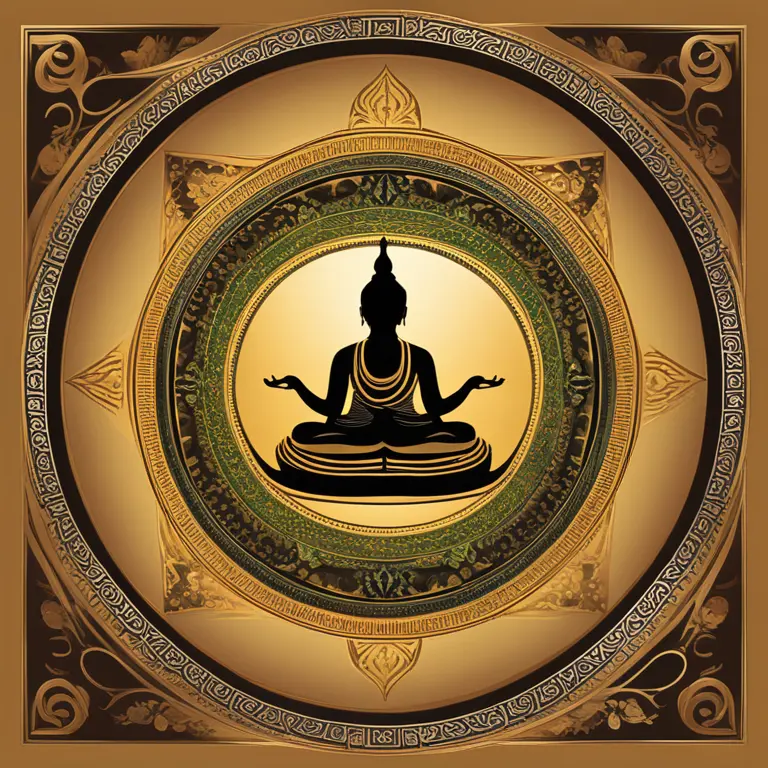
The Roots of Meditation: Tracing Its Ancient Beginnings
Delve into the ancient history of meditation, discover its diverse origins, and understand how this timeless practice began.
article by Hina Kurosawa
The Dawn of Meditation
Meditation is often perceived as a mystical practice, shrouded in the mists of time. However, historical evidence points to its diverse and ancient beginnings, spread across different cultures and continents. Primordial forms of meditation were likely part of early humanity's attempts to make sense of their consciousness and the world around them. Stone-age civilizations may have engaged in ritualistic dances or trance-inducing chants, precursors to the meditative practices we recognize today. This penchant for inner exploration and mind-altering practices suggests that meditation's roots are as old as human cognitive evolution itself.

The Indian Subcontinent: A Meditation Crucible
Meditation as a structured practice truly began to flourish in the Indian subcontinent. Historical texts like the Vedas, written around 1500 BCE, describe meditative traditions that are believed to have existed long before the texts were composed. The advent of Buddhism and Jainism around the 6th century BCE emphasized meditation even more. Buddha's quest for enlightenment under the Bodhi tree is perhaps the most iconic meditative journey, highlighting the practice's central role in the pursuit of spiritual awakening and self-realization in ancient India.
Taoist and Buddhist Influences in China
Meditation's journey is not confined to India. By the 6th century BCE, it had percolated through to China, largely thanks to the Silk Road. In China, it intertwined with Taoist philosophies that emphasize harmony with the Tao, or the fundamental nature of the world. The calisthenic exercises of Tai Chi and Qigong also have meditative aspects and fall within the broader scope of Chinese meditative practices. Buddhism, which made its way into China around the same time, brought with it a more formal practice of seated meditation known as "Chan," which would later evolve into Zen in Japan.
Reflections in the Greco-Roman World
Meditative practices similarly existed within Greco-Roman philosophies. The Stoics, for instance, practiced forms of mindfulness and meditative reflection that encouraged tranquility and reasoned existence. These traditions focused on introspection and self-improvement, akin to the meditative disciplines of the East. This illustrates the universality of meditation as a human activity, cutting across cultural and historical barriers to serve similar ends.
Meditation Enters the Modern Age
With the rise of global interconnectedness, meditation transcended its traditional boundaries and infused into Western culture, especially during the 20th century. By the 1960s, meditation had become a symbol of counterculture, embraced by those seeking spirituality outside conventional frameworks. Today, modern science has begun to recognize the benefits of meditation, studying its effects on stress, mental health, and neuroplasticity. Consequently, meditation has not only been upheld as a spiritual tool but also as a beneficial practice for mental and physical health.
Meditation Today and Tomorrow
As meditation continues to evolve, it has branched out into numerous schools and techniques tailored to the modern lifestyle. Mindfulness-based stress reduction (MBSR), transcendental meditation (TM), and various other practices are adapted to suit the fast-paced world we live in. Virtual reality meditation and app-based guided sessions exemplify the blend of ancient techniques with cutting-edge technology, ensuring that the essence of meditation remains relevant for generations to come.
Published: 1/14/2024
Modified: 1/15/2024
More predictions
Come back here soon to learn more about yourself and your future


Calming the Storm: Mindfulness Meditation for Anger
Discover how mindfulness meditation can be a powerful tool for anger management, promoting inner peace and emotional balance.


Mindfulness Meditation: A Handbook for High Schoolers
Discover how mindfulness meditation can benefit high school students, enhancing focus, reducing stress, and promoting overall well-being.


Easing Loneliness with Meditation
Discover how mindfulness meditation can provide solace and connection to mitigate feelings of loneliness, enhancing emotional and mental well-being.